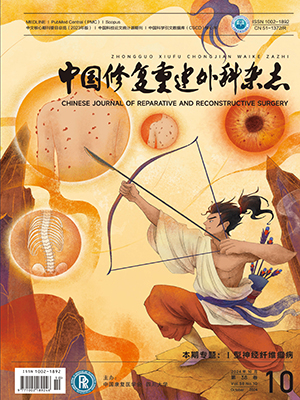Objective To determine the safety of the fetal olfactory ensheathing cell(OEC) transplantation in patients with chronic spinal cord injury (SCI) by examination of the magnetic resonance imaging (MRI). Methods A prospective clinical study involving 16 patients with chronic SCI was designed to investigate the feasibility and biological safety of the fetal OEC transplantation in treatment of SCI. The olfactory bulbs from the 3-4-month-old aborted human fetuses following the strict ethical guidelines were harvested and trypsinized down to single fetal OEC. These cells were then cultured for 12-17 days and were prepared for a clinical use. From November 2001 to December 2002, 16 patients with chronic SCI were randomly enrolled. The patients suffered from SCI for1.5-8 years (average 4-3 years) after the injury. The suspension (50 μl) containing about 1×106 fetal OECs was transplanted by an injection into the patients’ spinal cords above and below the injury site. All the patients were assessed before thetransplantation and were followed up with MRI for 29-42 months (average 38 mon)after the transplantation. Results No cell-related adverse effects were observed in any patient during the followup period. The follow-up with MRI did not reveal any development of optic glial tumor, tumor-like mass, new hemorrhage,edema, expanding cyst, new cyst formation, infection or disruption of the neuralstructure in the transplant site of all the patients. Conclusion This is the first clinical study demonstrating the long-term safety of theOEC therapy for SCI. The results indicate that our protocol is feasible and safe in treatment of patients with chronic SCI within 38 months after the injury. Although the size of the samples for our study was not big enough, the positive results of the study have encouraged us to make a further research in this field.
Citation: HUANG Hongyun,CHEN Lin,WANG Hongmei,XI Haitao,GOU ChengqingZHANG Jian,ZHANG Feng,LIU Yancheng. Safety of Fetal Olfactory Ensheathing Cell Transplan-tation in Patients with Chronic Spinal Cord Injury A 38-Month Follow-up withMRI. Chinese Journal of Reparative and Reconstructive Surgery, 2006, 20(4): 439-443. doi: Copy




